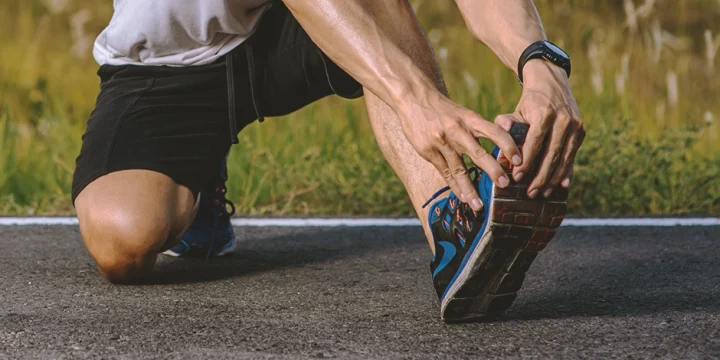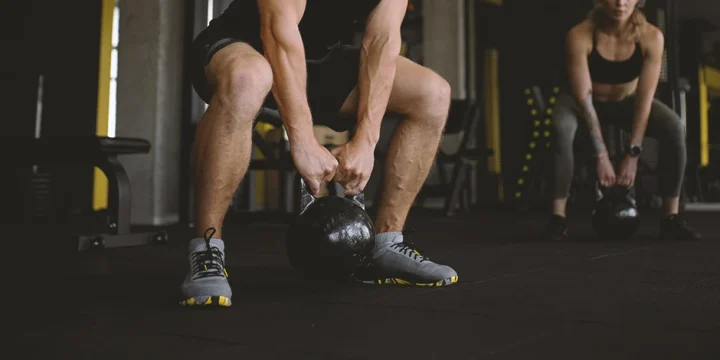As a certified fitness trainer, I've encountered many clients and individuals who wish to start their journey on track.
I took my time to research and get the correct information to help them and my readers start their track running efficiently.
In this article, I will give my research and findings on track workouts for beginners, track lingo and rules, and the difference between indoor and outdoor tracks.
Quick Summary
- The best track workouts for beginners include short-distance track workouts, medium-distance track workouts, long distance track workouts, indoor track exercises, and outdoor track training.
- Track workouts need planning ahead of time so that you can mentally prepare for an efficient workout and know what activity you want to do.
- According to the NIH, a recovery phase is essential for catching your breath and regrouping, allowing you to maintain a moderate effort level, about 50% of your interval exertion — to sustain performance in your interval sessions.
- In my view, track workouts, with their structured approach and varied intensities, offer an excellent way to improve running efficiency and break the monotony of regular road running.
The Track Workouts for Beginners

Short Distance Track Workouts for Beginners
- Warm up by jogging along the track and stretching.
- Run 400m (one lap on an outdoor track) around the track. Running at a medium-high intensity (6 to 7 out of 10) is ideal.
- Rest for around 2–3 minutes.
- Repeat steps 2 and 3 three times more for four 400m runs on the track.
- Run around the track for 200m (one half-lap on an outdoor track). A high intensity (7 to 8 out of 10) is recommended.
- Rest for around 2 to 3 minutes.
- Repeat steps 5 and 6 three times for four 200m runs on the track.
- Stretch and jog around the track to cool off.
Medium Distance Track Workouts for Beginners

- Warm up by jogging around the track and stretching.
- Run 800m (two laps on an outdoor track) around the track. Running at a medium-high intensity (6 to 7 out of 10) is ideal.
- Perform a 200m gentle jog followed by 1-2 minutes of rest.
- Repeat steps 2 and 3 four times for five 800m laps around the track. Aim to be faster each time.
- Stretch and jog around the track to cool off.
Long Distance Track Workouts for Beginners
- Warm up by jogging around the track and stretching.
- Run one mile on the track (four laps using an outdoor track). A medium-high intensity (6 to 7 out of 10) is ideal.
- Perform a 200m gentle jog followed by 1 to 2 minutes of rest.
- Repeat steps 2 and 3 for an overall two miles on the track.
- Run 400m (one lap on an outdoor track) around the track. A high intensity (7 to 8 out of 10) is recommended.
- Perform a 200m gentle jog followed by 1-2 minutes of rest.
- Repeat steps 5 and 6 thrice for four 400m laps around the track.
- Stretch and jog around the track to cool off.
Track Lingo

As a trainer, I find that these phrases are familiar to regular runners, particularly for track workouts, which require more structure compared to prolonged steady-state runs.
- Repeats: These are sections of the same distance completed a certain number of times with rest breaks in between.
- Strides: According to the National Institute of Health (NIH), these are very short sprints (maybe fifty meters or half the straightaway) performed at near maximum exertion [1].
- Intervals: An interval is a time of increasing exertion. They are complementary to recovery efforts. The objective is to maintain a constant level of performance across all intervals.
- Recovery: According to the NIH, a recovery phase helps you catch your breath, regroup, and concentrate on offering an ongoing effort in your interval sessions [2]. During the recovery period, your rate of perceived exertion should be 5 out of 10, or 50% of your interval effort.
"If you don't recover sufficiently, you'll spend the whole workout fighting fatigue rather than increasing speed and power. Maintain recovery times of two to three minutes for 100- and 200-meter runs, and four to five minutes for 400-meter efforts."
- Mechelle Lewis Freeman, Track & Field Olympian
Indoor vs Outdoor Track

Indoor track exercises are quite similar to outdoor track training. The primary distinction is the track and the season.
1. Track Size and Design
According to NIH, the indoor track has a 200-meter (or longer) track area with 6 lanes, whereas the outdoor track has a 400-meter (or longer) track area with 8 lanes [3].
Many indoor tracks are curved at a 10- to 15-degree angle to resist centrifugal force while negotiating curves, but outdoor tracks are not.
Indoor tracks require more bends and turns, which might slow down runners.
2. Indoor and Outdoor Season
The indoor track season runs from December through March in the United States.
Indoor track training is frequently utilized to prepare for the outdoor season, which lasts from March to July.
Related post: 8 Outdoor Workouts: Mix Up Your Summer Routine
Track Rules

- You should also constantly warm up and cool down before and after your workouts: Before the track workout, jog for 10 to 15 minutes slowly. Add additional strides after the warm-up to raise your heart rate and condition your muscles for speed exercises. Cool down by walking or running before or after workout to reduce your heart rate.
- Run counterclockwise: Runners on a track run counterclockwise (only left turns). When entering or exiting the track, glance both ways for runners to avoid collisions.
- Clear the first lane: This lane usually goes to the fastest runners. Otherwise, quicker runners should stay to the left, while slower runners should stay to the right (etiquette). The inside lanes are often used for speed workouts, while the outer lanes are used for tempo runs, cool-downs, and warm-ups.
Track Surface Benefits
The rubber track surface offers significant benefits for runners, particularly in terms of energy efficiency and injury prevention. Here's a detailed look at these advantages:
- Energy efficiency: The rubber surface of a track acts like a springboard. This elasticity helps in returning energy to the runner during each footstrike. Unlike harder surfaces, where energy is absorbed, the rubber track actually aids in propelling the runner forward. This can lead to improved performance, as less energy is expended in overcoming the resistance of the surface.
- Reduced impact on muscles and joints: Running on a rubber track is considerably more forgiving on the body compared to running on hard surfaces like concrete or asphalt. The softer surface reduces the impact on muscles and joints, which is crucial in minimizing the risk of overuse injuries. This is particularly beneficial for long-distance runners or those who are prone to joint issues.
- Consistency in training: Rubber tracks provide a consistent surface, which is essential for focused training. Runners can maintain a steady pace and form without the unpredictability of uneven or harder surfaces. This consistency is key for athletes in training who need to measure and compare performance over time.
- Improved safety: The traction on rubber tracks is generally better than on roads, especially in wet conditions. This reduces the risk of slips and falls, making it a safer option for runners, especially during adverse weather conditions or in early morning dew.
- Joint-friendly for all ages: For older runners or those recovering from injuries, the reduced impact of a rubber track can facilitate a safer and more comfortable running experience. It allows them to maintain their fitness levels without putting excessive strain on their bodies.
FAQs
How Do You Get a Body Like a Track Runner?
You get a body like a track runner by running more often. This does not, however, imply that you should run daily. If you're unfamiliar with running, take it slowly at first. Adhere to a training regimen that is tailored to your specific requirements.
How Can I Get Faster at Track?
You get faster at the track by warming up before running, keeping the proper running form, running on the balls of your feet, using shorter strides, breathing correctly, and practicing your cardio.
Does Track Get You in Shape?
Yes, the track gets you in shape. Track training may help you gain strength and speed while improving your general fitness and conditioning.
References:
- https://pubmed.ncbi.nlm.nih.gov/27295717/
- https://www.ncbi.nlm.nih.gov/pmc/articles/PMC5407969/
- https://www.ncbi.nlm.nih.gov/pmc/articles/PMC9914639/
About The Author
You May Also Like






